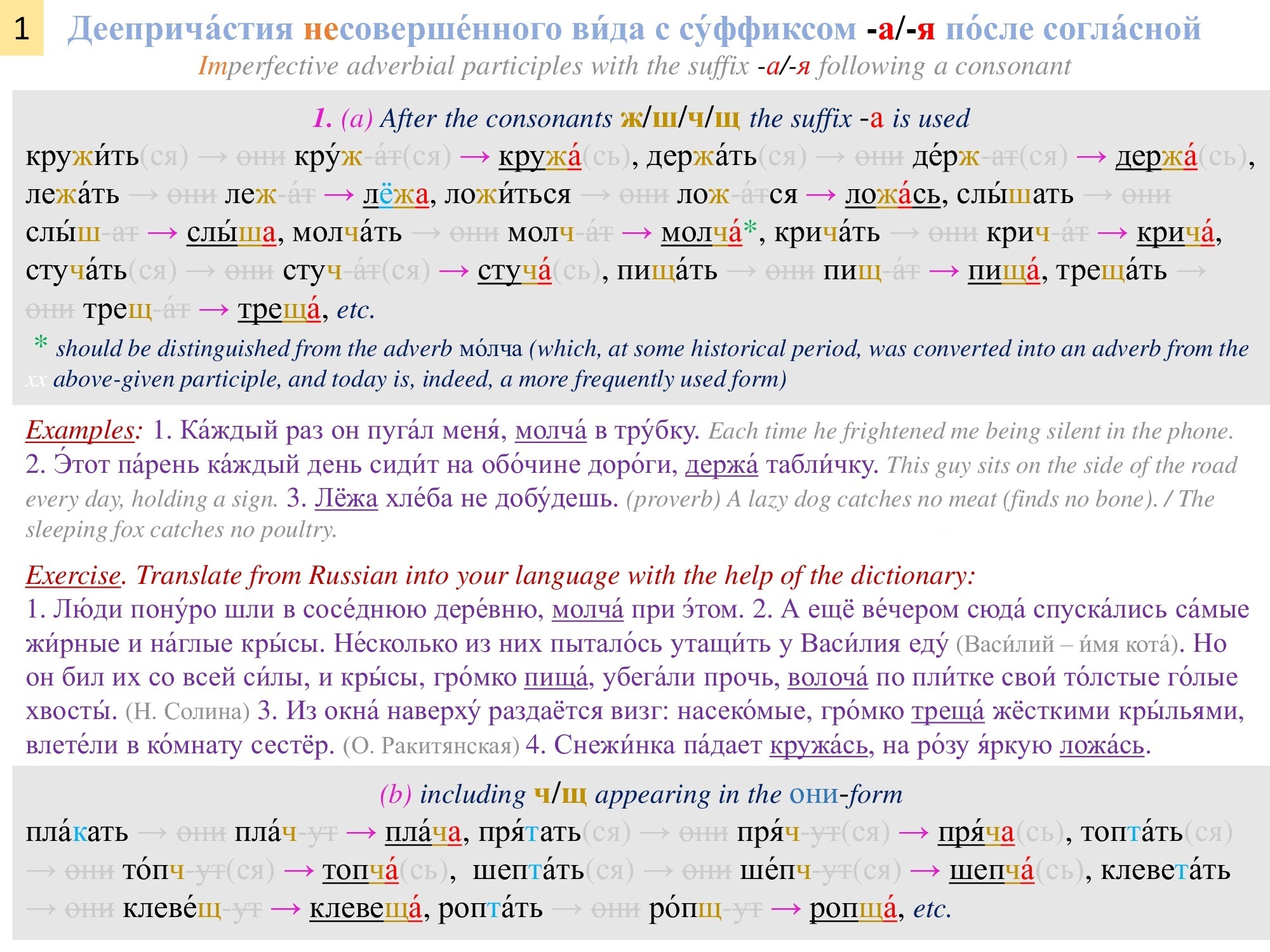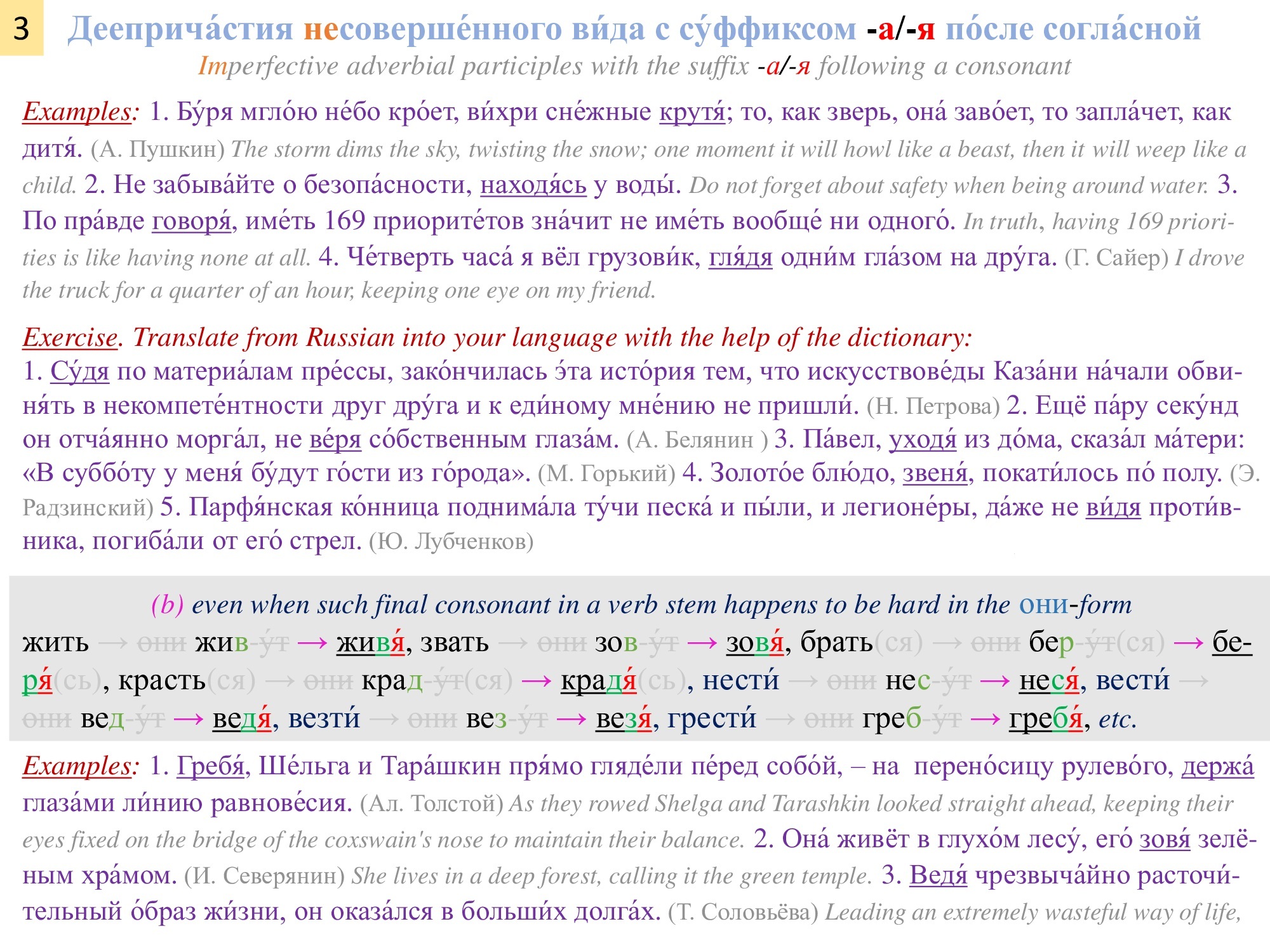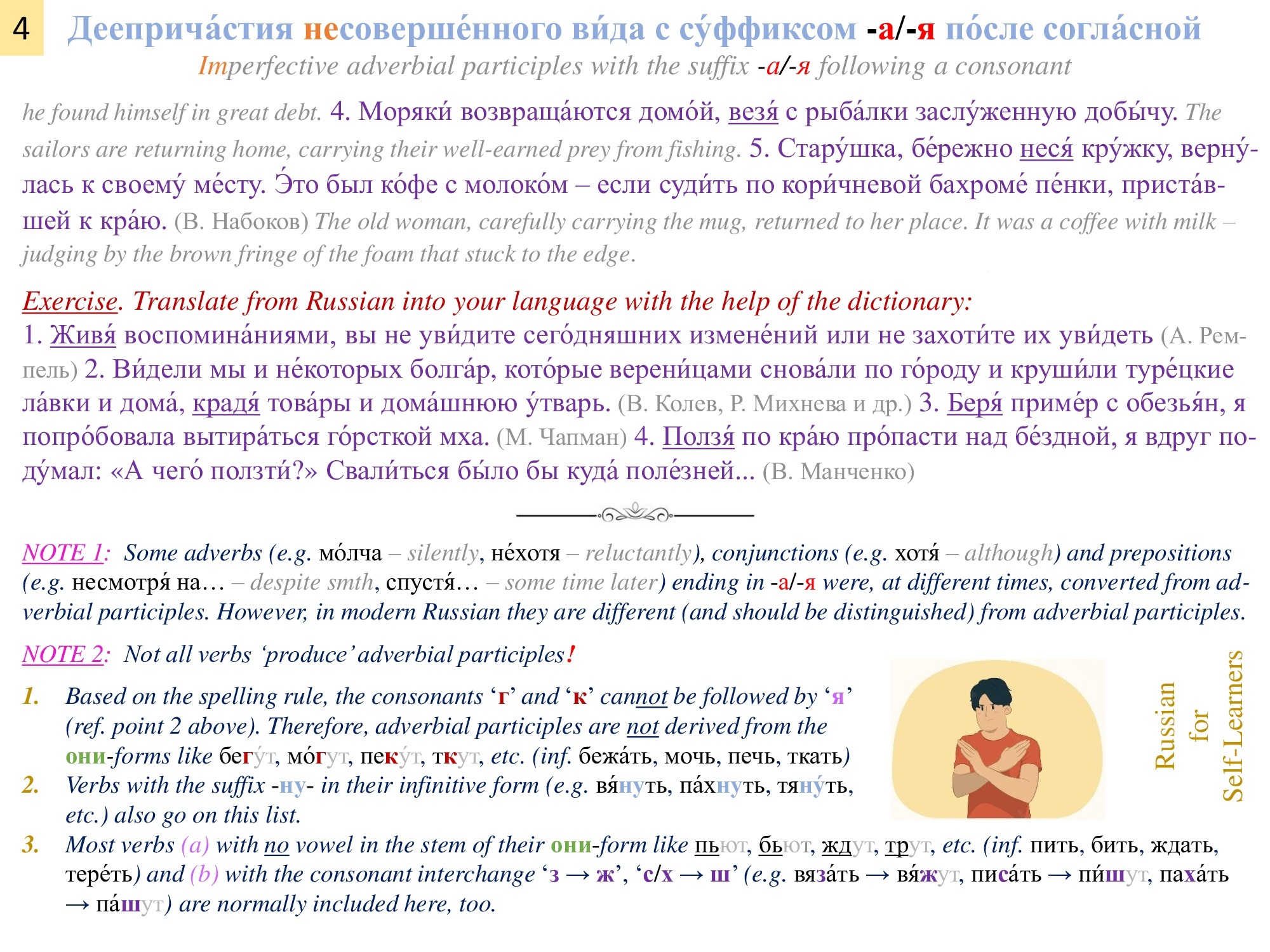Дееприча́стия несоверше́нного ви́да с су́ффиксом -а/-я по́сле согла́сной (Imperfective adverbial participles with the suffix -а/-я following a consonant)
Imperfective adverbial participles are derived from the present tense они-form of imperfective verbs (used for continuous or repetitive actions) with the help of the suffix -а/-я, which is added to its stem, for example: слы́шать → они слы́шат → слы́ша; говори́ть → они говоря́т → говоря́; etc.
In a sentence, they play the role of an adverb modifying the predicate, or of an adverbial phrase (дееприча́стный оборо́т) that should be understood as another action performed by the subject in addition to the main one expressed by the predicate. In this lesson, we will only consider the formation and usage of adverbial participles where the suffix -а/-я follows a consonant (which is the final letter, and sound, in the stem of the verb они-form).
NOTE: Punctuation may seem confusing, but, roughly, it should be as follows ⤵️
👉 If the subject, including the implied (missing) subject, performs two actions – one principal action expressed by the predicate, and the other (additional) expressed by an adverbial participle within its own phrase (or standing alone) – then it is separated by a comma (or commas), like any other segment with an additional idea inserted into a sentence. For example: Под голубы́ми небеса́ми великоле́пными ковра́ми, блестя́ на со́лнце, снег лежи́т. / Beneath the blue heavens, like a magnificent carpet, the snow lies sparkling in the sun. (А. Пушкин) Here, the subject «снег» performs 2 actions: (1) он «лежи́т» (which is the main verb) and (2) он «блести́т» на со́лнце (this is what additionally happens to the subject). The adverbial participial phrase «блестя́ на со́лнце» is inserted into the middle of the sentence and is separated by commas on both sides.
👉 If the subject performs one action (expressed by the predicate), then the adverbial participle can be interpreted as an adverb (e.g. an adverb of manner) modifying the verb. For example: Па́дает кружа́сь листо́к плаку́чей и́вы. / The leaf of the weeping willow falls swirling. (В. Моголь) Here, the subject «листо́к» performs 1 action: он «па́дает». The adverbial modifier «кружа́сь» specifies in what manner the leaf is falling down, and, in this sense, it can be compared to any other adverb, like «бы́стро», «ме́дленно», «пла́вно», etc. Therefore, it is not separated by commas here. However, there can be more than one interpretation (understanding) of one and the same sentence sometimes. Then, the punctuation is chosen by an author, depending on the meaning conveyed.
Possible interpretation in English: (1) clauses starting with one of these conjunctions: “and, as, when, while, etc” or no conjunction, (2) participial / gerundial constructions, (3) adverbs / adverbial phrases, (4) parenthetical words / phrases.


 Available in PDF: https://www.buymeacoffee.com/selfstudru8/e/112621
Available in PDF: https://www.buymeacoffee.com/selfstudru8/e/112621
